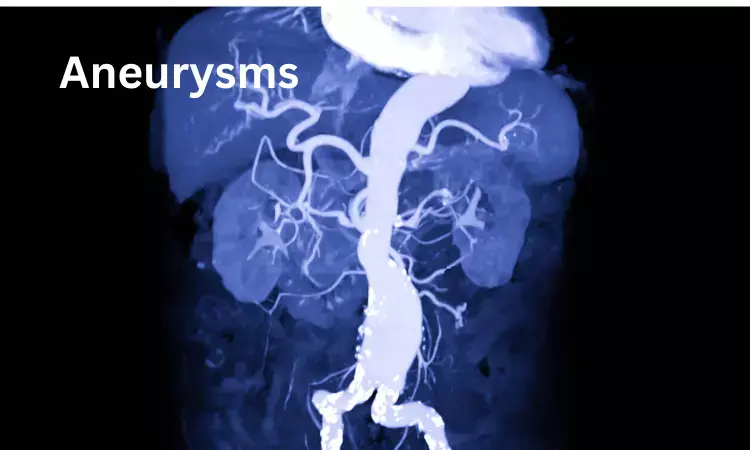- Home
- Medical news & Guidelines
- Anesthesiology
- Cardiology and CTVS
- Critical Care
- Dentistry
- Dermatology
- Diabetes and Endocrinology
- ENT
- Gastroenterology
- Medicine
- Nephrology
- Neurology
- Obstretics-Gynaecology
- Oncology
- Ophthalmology
- Orthopaedics
- Pediatrics-Neonatology
- Psychiatry
- Pulmonology
- Radiology
- Surgery
- Urology
- Laboratory Medicine
- Diet
- Nursing
- Paramedical
- Physiotherapy
- Health news
- Fact Check
- Bone Health Fact Check
- Brain Health Fact Check
- Cancer Related Fact Check
- Child Care Fact Check
- Dental and oral health fact check
- Diabetes and metabolic health fact check
- Diet and Nutrition Fact Check
- Eye and ENT Care Fact Check
- Fitness fact check
- Gut health fact check
- Heart health fact check
- Kidney health fact check
- Medical education fact check
- Men's health fact check
- Respiratory fact check
- Skin and hair care fact check
- Vaccine and Immunization fact check
- Women's health fact check
- AYUSH
- State News
- Andaman and Nicobar Islands
- Andhra Pradesh
- Arunachal Pradesh
- Assam
- Bihar
- Chandigarh
- Chattisgarh
- Dadra and Nagar Haveli
- Daman and Diu
- Delhi
- Goa
- Gujarat
- Haryana
- Himachal Pradesh
- Jammu & Kashmir
- Jharkhand
- Karnataka
- Kerala
- Ladakh
- Lakshadweep
- Madhya Pradesh
- Maharashtra
- Manipur
- Meghalaya
- Mizoram
- Nagaland
- Odisha
- Puducherry
- Punjab
- Rajasthan
- Sikkim
- Tamil Nadu
- Telangana
- Tripura
- Uttar Pradesh
- Uttrakhand
- West Bengal
- Medical Education
- Industry
Ultra-High-Resolution Computed Tomography Angiography reliable for diagnosing Intracranial aneurysms

Intracranial aneurysms have become relatively common in the past few decade, with a prevalence of approximately 4%. Unruptured aneurysms may cause symptoms mainly due to a mass effect, but the real danger is when an aneurysm ruptures, leading to a subarachnoid hemorrhage.
Ruptured intracranial aneurysms (IAs) are the leading cause for atraumatic subarachnoid hemorrhage. A recent study in Academic Radiology provides an evaluation of the diagnostic accuracy of Ultra-High-Resolution Computed Tomography Angiography (UHR-CTA) and Normal-Resolution Computed Tomography Angiography (NR-CTA) concerning IA detection and characterization.
Researchers compared both UHR-CTA and NR-CTA techniques and found that UHR-CTA was a much superior technique compared to NR-CTA in diagnosis, the method also provided improved image quality and reducing patient radiation exposure.
The study included consecutive patients with atraumatic subarachnoid hemorrhage who received Digital Subtraction Angiography (DSA) and either UHR-CTA or NR-CTA were retrospectively included. Three readers evaluated CT-Angiography regarding image quality, diagnostic confidence and presence of IAs. Sensitivity and specificity were calculated on patient-level and segment-level with reference standard DSA-imaging. CTA patient radiation exposure (effective dose) was compared.
The key findings of the study are
• One hundred and eight patients were identified (mean age = 57.8 ± 14.1 years, 65 women). UHR-CTA revealed significantly higher image quality and diagnostic confidence (P < 0.001) for all readers and significantly lower effective dose (P < 0.001).
• Readers correctly classified ≥55/56 patients on UHR-CTA and ≥44/52 patients on NR-CTA. We noted significantly higher patient-level sensitivity for UHR-CTA compared to NR-CTA for all three readers (reader 1: 41/41 [100%] vs. 28/34 [82%], reader 2: 41/41 [100%] vs. 30/34 [88%], reader 3: 41/41 [100%] vs. 30/34 [88%], P ≤ 0.04).
• Segment-level analysis also revealed significantly higher sensitivity for UHR-CTA compared to NR-CTA for all three readers (reader 1: 47/49 [96%] vs. 34/45 [76%], reader 2: 47/49 [96%] vs. 37/45 [82%], reader 3: 48/49 [98%] vs. 37/45 [82%], P ≤ 0.04). Specificity was comparable for both techniques.
Researchers concluded that “We found Ultra-High-Resolution CT-Angiography to provide higher sensitivity than Normal-Resolution CT-Angiography for the detection of intracranial aneurysms in patients with aneurysmal subarachnoid hemorrhage while improving image quality and reducing patient radiation exposure.”
Reference: Marius Frenzel, Felix A. Ucar, Carolin Brockmann, Prof MD et al; Comparison of Ultra-High-Resolution and Normal-Resolution CT-Angiography for Intracranial Aneurysm Detection in Patients with Subarachnoid Hemorrhage; October 09, 2023DOI:https://doi.org/10.1016/j.acra.2023.08.035
MSc. Neuroscience
Niveditha Subramani a MSc. Neuroscience (Faculty of Medicine) graduate from University of Madras, Chennai. Ambitious in Neuro research having worked in motor diseases and neuron apoptosis is interested in more of new upcoming research and their advancement in field of medicine. She has an engrossed skill towards writing and her roles at Medical dialogue include Sr. Content writer. Her news covers new discoveries and updates in field of medicine. She can be reached at editorial@medicaldialogues.in
Dr Kamal Kant Kohli-MBBS, DTCD- a chest specialist with more than 30 years of practice and a flair for writing clinical articles, Dr Kamal Kant Kohli joined Medical Dialogues as a Chief Editor of Medical News. Besides writing articles, as an editor, he proofreads and verifies all the medical content published on Medical Dialogues including those coming from journals, studies,medical conferences,guidelines etc. Email: drkohli@medicaldialogues.in. Contact no. 011-43720751


